DOH Medicaid Update December 2006 Vol. 21, No. 13
Office of Medicaid Management
DOH Medicaid Update
December 2006 Vol. 21, No. 13
State of New York
George E. Pataki, Governor
Department of Health
Antonia C. Novello, M.D., M.P.H., Dr. P.H.
Commissioner
Medicaid Update
is a monthly publication of the
New York State Department of Health,
Office of Medicaid Management
Brian J. Wing, Deputy Commissioner
Table of Contents
Medicare Prescription Drug Benchmark Plans for 2007
Please Consult the Medicaid Preferred Drug List
Restructuring Long Term Care in New York State Money Follows The Person Federal Rebalancing Demonstration Program
Medicaid Reimbursement for Immunizations in Article 28 Hospital-Based and Freestanding Clinic Settings
Ordered Ambulatory and Medicaid Managed Care Reimbursement for Intrauterine Devices
Medicaid Coverage and Payment Criteria for Disposable Glucometers
Portable X-Ray Demonstration Project Reinstated
Service Authorization Exception Code Use
2007 Healthcare Common Procedure Coding System is Released
Understanding Claim Edit Denial Codes
Annual Recertification Notices for Billing
Upcoming Changes to Paper Claim Forms
NYS Medicaid Laboratory Fee Schedule is First Available in Excel Format
The Transportation and Emergency Preparedness Checklist
Address Correction
Revised Definition of Ambulance Advanced Life Support
January 2007 Annual Ambulette Survey
Seminar Schedule and Registration Reminder
Beware of Carbon Monoxide
Mandatory Lead Testing for Children
Provider Services
Medicare Part D
Drug Formulary Exceptions
Return to Table of Contents
It is important to start working to obtain Part D drug coverage for your patients now, as less than one month remains before the Medicaid limited wrap-around benefit starts. Beginning January 1, 2007, Medicaid drug coverage for dual eligibles will be limited to: Atypical antipsychotics; Antidepressants; Antiretrovirals, used in the treatment of HIV/AIDS; and Immunosuppressants, used in the treatment of tissue and organ transplant.
NOW is the time to act to assure your patient can obtain necessary drugs from their Medicare Part D Prescription Drug Plan.
In order for your patients to continue on their current medications, the following steps should be taken:
Prescriber Steps
- Identify your dual-eligible patients who are treated with drugs not covered by their Part D plan.
- If the Part D plan does not cover a suitable replacement, contact the plan to request an exception.
A copy of the exception request form entitled:
Medicare Part D Coverage Determination Request Form
is included below and is also available on the Center for Medicare and Medicaid Services website at: http://www.cms.hhs.gov/MLNProducts/Downloads/Form_Exceptions_final.pdf - If the Part D plan denies the exception request, contact the plan to start the appeals process.
Pharmacist Steps
- Identify dual-eligible recipients who are treated with drugs not covered by their Part D plan.
- Contact the prescriber to discuss drug therapy options; alternative covered drugs or pursuit of exceptions.
Medicare Prescription Drug Benchmark Plans For 2007
Return to Table of Contents
Providers and their staff may be key contacts for recipients who have questions about Medicare prescription drug plans. The Centers for Medicare and Medicaid Services (CMS) has identified the drug plans listed below as "benchmark plans" in New York State for 2007. Dual eligible (Medicare/Medicaid) recipients should be encouraged to join these plans as they will not be responsible for any premiums or deductibles.
Recipients who request assistance in making choices can receive help by contacting:
- Medicare: 1-800-MEDICARE
- CMS Plan Finder: www.medicare.gov
- Health Insurance Information Counseling Assistance Program (HIICAP): 1-800-701-0501
Or contact the plan directly. Plans and telephone numbers are listed below.
2007 New York State
Medicare Prescription Drug Plans
For People with both Medicare and NYS Medicaid
Below is a list of the 2007 Benchmark Medicare Prescription Drug Plans available to persons with both Medicare and New York State Medicaid. Other plans offered by these companies may require an additional monthly premium payment. This information was updated October 2006.
- American Progressive Insurance Co.
- Prescription Pathway Bronze Plan Reg 3
- Customer Service (800) 978-9500
- Bravo By Elder Health
- Bravo Rx II
- Customer Service (800) 235-9188
- CIGNA Healthcare
- Cignature Rx Value Plan
- Customer Service (800) 735-1459
- HealthSpring Prescription Drug Plan
- HealthSpring Prescription Drug Plan Reg3
- Customer Service (800) 331-6293
- HIP Ins Co of NY
- HIP Standard Part D New York
- Customer Service (800) 447-9169
- Humana Insurance Company of NY
- Humana PDP Standard
- Customer Service (800) 706-0872
- RxAmerica
- Advantage Star Plan by RxAmerica
- Customer Service (877) 279-0370
- Simply Prescriptions
- Rx 1
- Customer Service (800) 659-1986
- Sterling Prescription Drug Plan
- Sterling Rx
- Customer Service (866) 865-0664
- Unicare (Anthem)
- Medicare Rx Rewards Value
- Customer Service (800) 240-4333
- United Healthcare Insurance Co of NY
- AARP MedicareRX Plan Saver
- Customer Service (888) 867-5575
- Wellcare Health Plans
- Wellcare Classic
- Wellcare Signature
- Customer Service (888) 423-5252
Attention:
Prescribers
Please Consult The Medicaid Preferred Drug List (PDL)
Return to Table of Contents
Did you know...
- Brand name drugs identified as 'preferred' do not require prior authorization.
- Brand name and generic drugs identified as 'non-preferred' require prior authorization through the Clinical Call Center, not the Voice Interactive Phone System (VIPS), Mandatory Generic Drug Program option. Call 1-877-309-9493 and choose Option 1.
- Brand name drugs not included on the PDL are still subject to the Mandatory Generic Drug Program prior authorization requirements, and continue to be prior authorized through the VIPS. Call 1-877-309-9493 and choose Option 2.
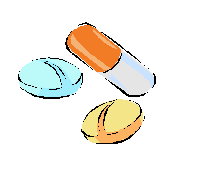
Please print the PDL below and post it where it is easily accessible to you and your staff. The most recent version of the PDL, clinical criteria and additional program information can also be found at: https://newyork.fhsc.com/ and www.nyhealth.gov
The Office of Medicaid Management sponsors education and outreach initiatives to assist providers in understanding the different pharmacy prior authorization programs.
Outreach interactions offered include:
- group presentations,
- individual office presentations,
- written assistance, and
- telephone conferences.
For more information or to schedule an outreach session, please visit:
https://newyork.fhsc.com/contactus.asp or contact us via telephone at (518) 951-2040.
New York State Medicaid
Preferred Drug List
All non-preferred drugs in these classes will require prior authorization.
| ACE Inhibitors | ACE Inhibitors |
|---|---|
| PREFERRED AGENTS | NON-PREFERRED AGENTS - PA Required Effective 6/28/06 |
| Altace® benazepril captopril enalapril maleate lisinopril Mavik® moexipril |
Accupril® Aceon® Capoten® fosinopril sodium Lotensin® Monopril® Prinivil® quinaprill Univasc® Vasotec® Zestril® |
| ACE Inhibitors + Calcium Channel Blocker | ACE Inhibitors + Calcium Channel Blocker |
| PREFERRED AGENTS | NON-PREFERRED AGENTS - PA Required Effective 6/28/06 |
| Lotrel ® Tarka® |
Lexxel® |
| ACE Inhibitors + Diuretic | Ace Inhibitors + Diuretic |
| PREFERRED AGENTS | NON-PREFERRED AGENTS - PA Required Effective 6/28/06 |
| benazepril/HCTZ captopril/HCTZ enalapril maleate/HCTZ lisinopril/HCTZ Unieretic® |
Accuretic® Capozide® fosinopril HTC Lotensin HCT® Monopril HCT® Prinzide® quinapril/HCTZ Quinaretic® Vaseretic® Zestoretic® |
| Angiotensin Receptor Blockers | Angiotensin Receptor Blockers |
| PREFERRED AGENTS | NON-PREFERRED AGENTS - PA Required Effective 6/28/06 |
| Benicar®® Cozaar® Diovan® Micardis ® |
Atacand® Avapro® Teveten® |
| Angiotensin Receptor Blocker + Diuretic | Angiotensin Receptor Blocker + Diuretic |
| PREFERRED AGENTS | NON-PREFERRED AGENTS - PA Required Effective 6/28/06 |
| Benicar HTC® Diovan HTC® Hyzaar® Micardis HCT® | Atacand HCT® Avalide® Teveten HCT® |
| Anti-Emetics - Oral | Anti-Emetics - Oral |
| PREFERRED AGENTS | NON-PREFERRED AGENTS - PA Required Effective 10/18/06 |
| Kytril®(tablet, solution) Zofran®(tablet, solution, ODT) |
Anzemet® |
| Second Generation Antihistamines | Second Generation Antihistamines CC |
| PREFERRED AGENTS | NON-PREFERRED AGENTS - PA Required Effective 10/18/06 |
| OTC loratadine OTC loratadine-D | Allegra® Allegra-D® Clarinex® Clarinex-D® fexofenadine Semprex-D® Zyrtec®CC Zyrtec-D® |
| Beta Blockers | Beta Blockers |
| PREFERRED AGENTS | NON-PREFERRED AGENTS - PA Required Effective 6/28/06 |
| acebutolol atenolol betaxolol bisoprolol funerate labetalol metoprolol tartrate nadolol pindolol propranolol timolol maleate |
Blocadren® Coreg®CC Corgard® Inderal LA® Inderal® InnoPran XL® Kerlone® Lopressor® Levatol® Sectral® Tenormin® Toprol XL®CC Trandate® Zebeta® |
| Beta Blocker + Diuretic | Beta Blocker + Diuretic |
| PREFERRED AGENTS | NON-PREFERRED AGENTS - PA Required Effective 10/18/06 |
| atenolol/chlorthalidone bisoprolol funerate/HCTZ metoprolol tartrate/HCTZ propranolol/HCTZ |
Corzide® Inderide® Inderide LA® Lopressor HCT® Tenoretic® Timolide® Ziac® |
| Bisphosphonates - Oral | Bisphosphonates - Oral |
| PREFERRED AGENTS | NON-PREFERRED AGENTS - PA Required Effective 6/28/06 |
| Fosamax®(tablet, solution) Fosamax®Plus D |
Actonel® Actonel®with Calcium Boniva® |
| Calcitonins - Nasal | Calcitonins - Nasal |
| PREFERRED AGENTS | NON-PREFERRED AGENTS - PA Required Effective 10/18/06 |
| Miacalcin® | Fortical® |
| Calcium Channel Blockers (DHP) | Calcium Channel Blockers (DHP) |
| PREFERRED AGENTS | NON-PREFERRED AGENTS - PA Required Effective 6/28/06 |
| Afeditab CR® Dynacirc ® Dynacirc CR® felodipine ER isradipine nicardipine HCL Nifediac CC® Nifedical XL® nifedipine nifedipine ER nifedipine SA Norvasc® Sular® |
Adalat CC® Cardene® Cardene SR® Plendil® Procardia® Procardia XL® |
| Hepatitis C Agents | Hepatitis C Agents |
| PREFERRED AGENTS | NON-PREFERRED AGENTS - PA Required Effective 10/18/06 |
| PEG-Intron® PEG-Intron Redipen® Pegasys® Pegasys Convenience Pack® | None |
| HMG-CoA Reductase Inhibitors (Statins) | HMG-CoA Reductase Inhibitors (Statins) |
| PREFERRED AGENTS | NON-PREFERRED AGENTS - PA Required Effective 10/18/06 |
| Advicor® Altoprev® Crestor® Lescol® Lescol XL Lipitor® Vytorin® Zocor® |
Caduet® lovastatin Mevacor® Pravachol® prevastatin PravigardPAC® |
| Leukotriene Modifiers | Leukotriene Modifiers |
| PREFERRED AGENTS | NON-PREFERRED AGENTS - PA Required Effective 10/18/06 |
| Accolate® Singular® | None |
| Narcotics - Long Acting | Narcotics - Long Acting |
| PREFERRED AGENTS | NON-PREFERRED AGENTS - PA Required Effective 10/18/06 |
| Duragesic® fentanyl patch Kadian® morphine sulfate SR Oramorph SR® |
Avinza® MS Contin® Opana ER® oxycodone HCL CR Oxycontin® |
| Proton Pump Inhibitors | Proton Pump Inhibitors |
| PREFERRED AGENTS | NON-PREFERRED AGENTS - PA Required Effective 10/18/06 |
| Nexium® Prevacid®(capsule) Prilosec®OTC |
Acifex® omeprazole Prevacid NapraPAC® Prevacid® (solutab, suspension) Prilosec® Protonix® Zegerid® (capsule, packet) |
| Sedative Hypnotics/Sleep Agents | Sedative Hypnotics/Sleep Agents |
| PREFERRED AGENTS | NON-PREFERRED AGENTS - PA Required Effective 10/18/06 |
| Ambien CR® chloral hydrate estazolam flurazepam temazepam triazolam |
Ambien® Dalmane® Doral® Halcion® Lunesta® Prosom® Restoril® Rozerem® Somnote® Sonta® |
| Serotonin Receptor Agonists (Triptans) | Serotonin Receptor Agonists (Triptans) |
| PREFERRED AGENTS | NON-PREFERRED AGENTS - PA Required Effective 10/18/06 |
| Imitrex®(tablet, nasal, injection) Maxalt®(tablet, MLT) | Amerge® Axert® Frova® Relpax® Zomig®(tablet, nasal, ZMT) |
| Steroids - Intranasal | Steroids - Intranasal |
| PREFERRED AGENTS | NON-PREFERRED AGENTS - PA Required Effective 10/18/06 |
| Nasacort AQ® Nasonex® |
Beconase AQ® Flonase® flunisolide® fluticasone® Nasarel® Rhinacort Aqua® |
| Thiazolidinediones | Thiazolidinediones |
| PREFERRED AGENTS | NON-PREFERRED AGENTS - PA Required Effective 10/18/06 |
| Actos® Actoplus met® Avandia® Avandamet® Avandaryl | Duetact® |
| Triglyceride Lowering Agents | Triglyceride Lowering Agents |
| PREFERRED AGENTS | NON-PREFERRED AGENTS - PA Required Effective 10/18/06 |
| gemfibrozil Lofirba® |
Antara® fenofibrate® Lopid® Omacor® Tricor Triglide |
Restructuring Long Term Care in New York State
Money Follows the Person
Federal Rebalancing Demonstration Program
Return to Table of Contents
In past Medicaid Updates, we pledged to keep you informed of the progress made by the New York State Department of Health (DOH) and Office for the Aging (NYSOFA) to realize recommended improvements in the State's long term health care system made by the Governor's Workgroup on Health Care Reform in its 2004 Report.
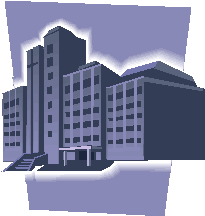
Accordingly, the following discusses our recent decision to apply for participation in the new Money Follows the Person (MFP) Federal Rebalancing Demonstration grant program.
Money Follows the Person Demonstration Grant Federal Deficit Reduction Act of 2005
The MFP grants are intended to assist states in building infrastructures that will result in effective and enduring improvements in community-based long-term care and support systems. The Centers for Medicare and Medicaid Services has historically defined MFP as "a system of flexible financing for long-term care services and supports that enable available funds to move with the individual to the most appropriate and preferred setting as the individual's needs and preferences change."
The current MFP demonstration program is part of this federal strategy to assist States in their efforts to reduce reliance on institutional care while developing community-based long-term care opportunities for people with disabilities of all ages.
If awarded, the grant will complement the Department's other long term care initiatives by providing an enhanced federal reimbursement rate for select services to persons who, having been in a nursing home for more than six months, transition to community-based care.
The Office of Medicaid Management worked closely with consumer stakeholders to develop an application that was submitted on November 1, 2006. CMS is expected to announce the grant awards by early January 2007.
Additional information on the LTC Restructuring Program may be obtained online at:
http://www.health.state.ny.us/health_care/medicaid/related/health_care_reform/index.htm
or by calling the Division of Consumer & Local District Relations at (518) 408-3744.

The Department of Health operates the Growing Up Healthy Hotline, which provides information about health care, nutrition and other health and human services.
The Hotline provides information and referral 24 hours a day, seven days a week in English, Spanish and other languages.
Anyone can contact the Hotline by calling (800) 522-5006 or through TTY access at (800) 655-1789.
All calls are confidential.
Medicaid Reimbursement for Immunizations in
Article 28 Hospital-Based and Freestanding Clinic Settings
Return to Table of Contents
Change in Medicaid Payment Policy
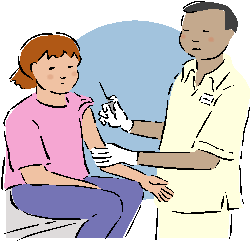
An article printed in the September 2001 Medicaid Update provided billing guidance for influenza immunizations provided in the clinic setting.
This article reflects a change in policy.
Please refer to the chart below when billing for immunizations provided in an Article 28 facility.
Definitions required for chart use:
- A registered clinic patient is one whose primary source of medical care is received from the Article 28 facility.
• When services are provided to a registered clinic patient, the facility bills Medicaid their all-inclusive threshold clinic rate.
It is expected that all necessary services should be provided on that date, including necessary immunizations and/or injections. Occasionally, this is not possible. A registered clinic patient service does not qualify for reimbursement as an ordered ambulatory service; however, in some scenarios presented below, you will note specific exceptions where we allow fee-for-service billing. - An ordered ambulatory patient is one who has been referred to the clinic for a specific service. The referring practitioner is not affiliated with the Article 28 facility which is providing the ordered ambulatory service. Such services may include a singular occasion of service or a series of tests or treatments.
• Claims for ordered ambulatory services are paid on a fee-for-service basis and not at the all-inclusive threshold clinic rate. The billing provider must have the Ordered Ambulatory Category of Service (0163 for freestanding Diagnostic and Treatment Centers; 0282 for hospital-based outpatient clinics). - A qualifying threshold visit is one where the registered clinic patient has an encounter with a physician, physician assistant, nurse practitioner or licensed midwife for services that include comprehensive primary care. A qualifying visit is reimbursed at the all-inclusive clinic threshold rate.
| Patient Status | Visit/Services | Billing Guidance |
|---|---|---|
| Registered Clinic Patient (Any age) | Patient is receiving primary care services. | This is a qualifying threshold visit and is reimbursed at the clinic rate. |
| Registered Clinic Patient (Any age) | Patient is receiving primary care services and an immunization. | This is a qualifying threshold visit and is reimbursed at the clinic rate. |
| Registered Clinic Patient (Under 19 years of age) | Patient visits for immunization only. Vaccine is provided to the clinic by the Vaccines For Children (VFC) program. | Immunizations should routinely be given as part of a qualifying threshold visit. |
| Registered Clinic Patient (19 years of age or older) | Patient visits for immunization only. The vaccine is not provided by the VFC program. | Immunizations should routinely be given as part of a qualifying threshold visit. |
| In a Products of Ambulatory Care (PAC) Clinic (Any patient, any age) | Patient is receiving an immunization only. The service is provided by a physician, physician assistant, nurse practitioner, or licensed midwife. | This is grouped and paid as a PAC reimbursement. |
| Ordered Ambulatory Patient (Under 19 years of age) | Patient visits for immunization only. Vaccine was provided by the VFC program. | This is NOT a qualifying threshold visit. However, the clinic may bill the HCPCS procedure code, appended with the modifier 'SL' and will be paid as an Ordered Ambulatory service. Reimbursement will be for the immunization administration in the amount of $17.85. |
| Ordered Ambulatory Patient (19 years of age or older) | Patient visits for immunization only. Vaccine is not provided by the VFC program. | This is NOT a qualifying threshold visit. However, the clinic may bill the HCPCS procedure code that represents the immunization provided at their actual acquisition cost for the vaccine +$2.00 for administration. |
Important Reminders
- For a clinic threshold visit to be billed to Medicaid, the patient must be seen by a recognized practitioner (e.g., physician, dentist, physician assistant, nurse practitioner, licensed midwife, physical/speech/occupational therapist, etc.).
- When a Medicaid beneficiary under the age of 19 years is immunized, and the vaccine is covered by the VFC program, the SL modifier must be used.
More Information
Policy questions may be directed to the Bureau of Policy Development and Agency Relations at:
(518) 473-2160.
VFC Program questions should be directed to:
(800) 543-7468 or (518) 474-4578.
Clinics that do not have the Ordered Ambulatory Category of Service (0163 or 0282) should contact the Division of Medical Review and Provider Enrollment at:
(518) 474-8161.
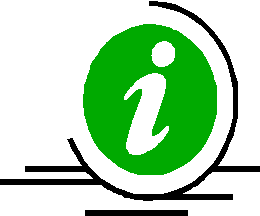
Missing Issues?
The Medicaid Update,now indexed by subject area, can be accessed online at the New York State Department of Health website:
http://www.nyhealth.gov/medicaid/program/update/main.htm
Hard copies can be obtained upon request by emailing: MedicaidUpdate@health.state.ny.us
Attention:
- Hospital Outpatient Departments
- Free-Standing Diagnostic and Treatment Centers
- Ordered Ambulatory Clinics
- Physicians,
- Nurse Practitioners
- Midwives
- Medicaid Managed Care Plans
Ordered Ambulatory Reimbursement for Intrauterine Devices
Ordered Ambulatory Fee-For-Service and Medicaid Managed Care
Return to Table of Contents

Effective November 1, 2006, clinics providing an intrauterine device (IUD) as an ordered ambulatory service are able to bill fee-for-service, (see reimbursement policy below for providers treating patients enrolled in Medicaid managed care plans).
The IUD cost can only be billed for Medicaid recipients who are referred to the clinic by a private practitioner or by another clinic that does not provide this service. A recipient that self-refers to a clinic for an IUD is not considered a recipient of ordered ambulatory services, but should be registered as a clinic patient.
A clinic must be enrolled in the Medicaid Program with the designated category of service of 0163 (ordered ambulatory diagnostic and treatment center) or 0282 (hospital based ordered ambulatory) in order to bill for the IUD.
Billing Codes
CPT Codes for the Billing of IUDs are:
- J7300 Intrauterine Copper Contraceptive
- J7302 Levonorgestrel-releasing Intrauterine Contraceptive System.
The reimbursement for the IUD is limited to acquisition cost from the manufacturer or the customary charge, whichever is less. Claim charges shall not exceed the lesser value.
The physician, nurse practitioner, or midwife, performing the insertion or removal of the IUD, may bill fee-for-service, when appropriate and within the specific guidelines below, using the following CPT codes:
- 58300 Insertion of Intrauterine Device
- 58301 Removal of Intrauterine Device.
Registered Clinic Patients in Outpatient Hospital Departments
When an IUD is provided to a Medicaid recipient who is a registered clinic patient of an outpatient hospital clinic (not ordered ambulatory) and an IUD is inserted or removed, the cost of the IUD is included in the threshold clinic rate.
Since the protocol for an IUD insertion is for a return visit for a checkup, the clinic can bill another threshold clinic visit for the follow-up care.
If physician, nurse practitioner, or midwife services are not included in the threshold clinic rate, they can bill separately for the insertion or removal of the IUD using the aforementioned CPT codes and also bill for follow-up care.
Note: A recipient that self-refers to a clinic for an IUD is not ordered considered a recipient of ambulatory services, but should be registered as a clinic patient.
Registered Clinic Patients in Diagnostic and Treatment Centers
When an IUD is provided to a Medicaid recipient who is a registered clinic patient of a diagnostic and treatment center (not ordered ambulatory), the cost of the IUD and the insertion or removal of the IUD (including the professional component) are included in the threshold clinic rate. The clinic can bill another threshold clinic visit for follow-up care.
Note: A recipient that self-refers to a clinic for an IUD is not considered a recipient of ordered ambulatory services, but should be registered as a clinic patient.
Medicaid Managed Care and IUD Reimbursement
Clinics and Practitioners Treating Patients in Medicaid Managed Care Plans Offering Family Planning Services
Clinics and practitioners contracting with a patient's Medicaid Managed Care plan to provide IUDs may not bill for IUDs as ordered ambulatory services under fee for service.
These providers must bill the patient's Managed Care plan at rates negotiated with the plan.
Clinics and practitioners who do NOT have contracts with a patient's Medicaid managed care plan to provide family planning services may see patients that request IUDs on a self-referral basis only. This patient is not considered a recipient of ordered ambulatory services, but is considered a registered clinic patient.
In accordance with the clinic billing instructions described above, the clinic should bill the all-inclusive threshold rate to Medicaid. The cost of the IUD is included in the threshold clinic rate.
Medicaid Managed Care Plans that Provide Family Planning Services
Medicaid managed care plans must have providers in network that will offer the IUD as well as perform the insertion or removal of the IUD. The cost of the device is never considered a pharmacy item and must always be included in the cost of the practitioner or clinic services.
IUDs and related provider services are both:
- in the Medicaid managed care benefit package; and
- available in Medicaid fee-for-service under the free access policy.
As with all family planning services, Medicaid Managed Care plans will be charged for IUDs provided to health plan members by non-participating providers who bill Medicaid fee-for-service.
If a clinic wants to provide IUDs for ordered ambulatory patients, but is not enrolled in the Medicaid program with either of these two categories of services, please call the Medicaid Division of Medical Review and Provider Enrollment at (518) 474-8161.
Questions? Please contact the Bureau of Policy Development and Agency Relations at (518) 473-2160.
Medicaid Managed Care questions? Please contact the Office of Managed Care at (518) 473-7467.
MEDICAID COVERAGE AND PAYMENT CRITERIA FOR DISPOSABLE GLUCOMETERS
Return to Table of Contents
Home disposable glucometer products can assist some patients in better management of their diabetes than they may have attained with traditional glucometers.
Effective January 1, 2007, Medicaid coverage is available for disposable glucometers (code A9275 ) when the ordering practitioner documents in the patient's clinical file that the patient is:
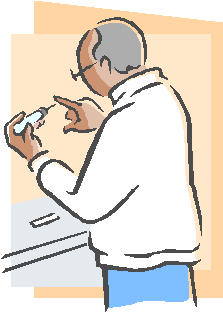
- a person newly diagnosed with diabetes;
- diagnosed with gestational diabetes;
- diagnosed with Type 2 diabetes;
- in medical need of a treatment plan change from a traditional to disposable home glucometer;
- in medical need of an emergency replacement glucometer while awaiting prior approval of a traditional glucometer; or
- a child who requires testing in school.
One of these diagnoses or situations must be documented on the fiscal order presented to the Pharmacy or Durable Medical Equipment (DME) provider.
Disposable glucometers are not reimbursable as a back-up glucometer.
With the exception of children attending school who require testing, Medicaid payment is only available for EITHER a traditional glucometer OR a disposable glucometer. If a disposable glucometer is dispensed, no additional strips are reimbursable.
If one of the above criteria is met, Pharmacies and DME providers may dispense disposable glucometers for dates of service on or after January 1, 2007 using code A9275 #Home glucose disposable monitor, includes test strips.
- The maximum fee allowed is $28.75.
- This fee includes 50 strips, with up to two claim units (up to 100 strips) allowed per month.
- Dispensing Validation System (DVS) electronic prior authorization is required.
Questions on coverage criteria may be referred to the Division of Medical Review and Provider Enrollment at:
518-474-8161.
Questions on DVS authorization and claims submission may be referred to Computer Sciences Corporation at:
(800) 343-9000.
Attention:
- Portable X-Ray Demonstration Program Providers
- Residential Health Care Facilities
- Intermediate Care Facilities for the Developmentally Disabled
Portable X-Ray Demonstration Project Reinstated
Return to Table of Contents
This program expired June 30, 2006, but was subsequently legislatively reinstated through June 30, 2008.

This demonstration project is for services provided to residents of Residential Health Care Facilities (RHCFs) or Intermediate Care Facilities for the Developmentally Disabled (ICF/DDs) whose only health coverage is Medicaid.
Any submitted claims that were denied for Edit 01301, 'Portable X-Ray Claim Submitted with DOS after Cutoff Date' may be resubmitted as adjustments. If the claim was denied, no adjustment can be made.
IMPORTANT REMINDER: Claims submitted for x-ray services by Portable X-Ray Demonstration Providers must be appended by the TC modifier with the following exceptions only: transportation and set-up codes and cardiography codes (93000, 93005, 93040 and 93041). Failure to use the TC modifier on CPT codes beginning with 7 will result in overpayment and future recoupment.
Questions? Contact the Bureau of Policy Development and Agency Relations at: 518-473-2160.
Attention:
- DME providers submitting claims for approved SPEECH and HEARING, and approved APNEA centers.
- Hospitals and clinics billing as DME orthotic and prosthetic appliance vendors.
Service Authorization Exception Code Use
Return to Table of Contents
Since the implementation of HIPAA electronic transaction specifications, NYS Medicaid uses Service Authorization (SA) Exception Code "7" (Special Handling) to assist in our internal derivation of a specialty code needed for processing claims.
DME Providers submitting claims for services such as Approved Speech & Hearing (Specialty Code 967) and Approved Apnea Centers (Specialty Code 982) require the SA Exception Code 7 on the claim in order for the correct specialty code to be derived.
Likewise, all claims from Clinics and Hospitals for DME Orthotic and Prosthetic Appliances must contain the SA Exception Code 7 (Special Handling) to ensure Specialty Code 969 is derived.
On the eMedNY 150001-claim form, the SA Exception Code is entered in field 25D. On the electronic 837 Professional and 837 Institutional claim record, the SA Exception Code is entered in Loop 2300 Data Element REF02 Qualifier 4N.
Questions regarding SA Exception Codes, please call the eMedNY Call Center at: 1-800-343-9000.
eMedNY
Update
2007 Healthcare Common Procedure Coding System Is Released
Return to Table of Contents
For billing dates of service on and after January 1, 2007, all health care providers and plans must utilize the 2007 Healthcare Common Procedure Coding System (HCPCS) as released by the federal Centers for Medicare and Medicaid Services.
Provider notification on coding changes relating to Medicaid covered services will be available on each provider manual homepage on the eMedNY website, http://www.emedny.org/providermanuals/index.html in December 2006. Check the Provider Communication link or the new Fee Schedule link.
Other available coding resources include:
- HCPCS Level I (CPT-4) procedure codes for practitioners and laboratories can be purchased in hard copy or electronic form through many publishing houses.
- HCPCS Level II (Alpha-Numeric) codes for other medical services are available in electronic version online at http://www.cms.hhs.gov/HCPCSReleaseCodeSets/
- ICD-9 Diagnosis and Procedure codes (effective 10/1/2006) are available in electronic version online at http://www.cms.hhs.gov/icd9providerdiagnosticcodes, and are also available through publishing houses.
HCPCS and ICD-9 codes are not Medicaid specific. Providers must use the current code set when billing any health care payer.
Also New for 2007 - Changes in the Criteria for Exempting Codes from the Multiple Surgical Rule .
As of January 1, 2007, Medicaid will adopt Medicare's guidelines for exempting HCPCS codes from the multiple surgical rule. Medicare's exempt codes can be found in the National Physician Fee Schedule Relative Value File on the CMS website at: http://www.cms.hhs.gov/physicianfeesched/
Questions? Contact the Division of Medical Review and Provider Enrollment at (518) 474-8161.
eMedNY
Update
Understanding Claim Edit Denial Codes
Return to Table of Contents
The Department of Health and Computer Sciences Corporation staff continue to work with providers, vendors and provider organizations, offering assistance and support.
The Edit/Error Knowledge Base is a tool to help providers identify eMedNY proprietary claims processing edits and the probable corrective action. The knowledge base offers an explanation of what an eMedNY edit means and the action to be taken to resolve the issue. This tool should expedite and facilitate the identification and correction of claiming errors. Updates to the Edit/Error Knowledge Base are made regularly and providers are urged to take advantage of this valuable resource. It is available at http://www.emedny.org, in the NYHIPAADESK tab. The Edit/Error Knowledge Base is listed on the left side of the page.
- Also available under the NYHIPAADESK tab are various crosswalk tables that enable a user to crosswalk a HIPAA 835 edit or a HIPAA 277 edit to a traditional eMedNY edit. Using the crosswalk in conjunction with the Edit/Error Knowledge Base allows a provider to determine the reason for a claim denial, correct the data and resubmit the claim.
- For providers receiving electronic remittances, also available is an 835 Supplemental Electronic Remittance. This supplemental file contains all the same claims that are denied on the 835 remittance but with the traditional eMedNY edits. If you are currently receiving the 835 remittance then the 835 Supplemental is automatically furnished to you at the same time you download the 835. Talk to your vendor, service bureau or IT department about this valuable resource that will assist you in identifying the reasons for denied claims.
Questions? Please call the eMedNY Call Center at (800) 343-9000.
ANNUAL RECERTIFICATION NOTICES FOR BILLING
Return to Table of Contents
Providers who submit electronic claims to the New York State Medicaid program are required by the Department of Health to submit a signed and notarized Certification Statement on a yearly basis.
Computer Sciences Corporation (CSC) sends two certification notices to alert providers when the certification period will expire. Notices are generated for providers 45 days and 30 days prior to the certification expiration date which is included in the notices. Along with the notices are also sent preprinted Certification Statements. Send only the signed certification statement back.

If a provider fails to return the Certification Statement prior to the expiration date, the provider is "de-certified" on that date and claims will be rejected (not processed).
A provider may receive certification notices for an Electronic Transmitter Identification Number (ETIN) (formerly known as TSN) that is no longer in use by the provider, or for a service bureau the provider may have been linked to in the past but has no current affiliation. In either of these two situations, there is a way to stop these notices from being generated.
There is a "REQUEST TO DISAFFILIATE/DELETE AN ETIN" form located at http://www.emedny.org. On the main website page, choose Provider Enrollment Forms and then scroll to the bottom of the page to find the form.
If you are not the owner of the ETIN, you cannot request to cancel it but you may request to disaffiliate your provider identification number with the ETIN.
For example, if a provider previously had claims submitted through a service bureau utilizing the service bureau's ETIN, that ETIN belongs to the service bureau.
An easy way to know if the ETIN belongs to a service bureau is to check the first character of the ETIN on Certification Statement that was sent with the recertification notice. If the ETIN begins with a zero (0), it is owned by a service bureau. Please note that ETINs are never assigned beginning with the letter "O".
In this case, the provider should submit the form requesting to disaffiliate the provider identification number from the ETIN. This will prevent future notices from being mailed to you.
Requests to Disaffiliate/Delete an ETIN can be mailed to CSC at the address below or for speedier processing; the form can be faxed to the number below. Please note that signed and notarized Certification Statements cannot be faxed as the original is required to recertify a provider for another year.
Computer Sciences Corporation
Enrollment Support
1 CSC Way
Rensselaer, New York 12144
Fax: (518) 257-4632
Questions? Please contact the eMedNY Call Center at (800) 343-9000 option 5.
UPCOMING CHANGES TO PAPER CLAIM FORMS
Return to Table of Contents
Professional Providers Utilizing the HCFA-1500 Claim Form
NYS Medicaid will NOT implement the newly revised federal version of the HCFA-1500 claim form. NYS Medicaid will continue to process professional paper claims on the current eMedNY 150001 claim forms. Please be advised that there will be changes to the eMedNY 150001 claim form in the second quarter of 2007.
The claim forms will no longer be preprinted with your NYS Medicaid Provider Identification Number, Group Provider Identification Number and Provider Name and Address.

- Providers will need to enter the NYS Medicaid Provider Identification Number in Field 25A, (Provider Identification Number).
- In addition to entering the individual Provider Identification Number, providers who bill with a Group Practice Provider Identification Number, will need to enter the Group Identification Number in Field 25B, (Medicaid Group Identification Number).
Providers will need to enter their provider name and address in Field 31, (Physician's or Supplier's Name, Address, Zip Code).
Providers will be able to utilize their supply of preprinted forms until their supplies are replenished with non-preprinted versions of the form.
Dental Providers, Transportation Providers and Pharmacy Providers
'Claim Form A' utilized by dentists and transportation providers and the Pharmacy Claim form will have similar changes, (as noted above) in the second quarter of 2007. These claim forms will no longer be preprinted with your NYS Medicaid Provider Identification Number, Provider name and address, and for dentists billing on 'Claim Form A' with a Group Practice Identification Number, the Group Identification Number will no longer be preprinted on 'Claim Form A'.
Providers who print forms via an electronic method will need to adjust their programs, at that time, to print the NYS Medicaid Provider Identification Number in Field 1, (Provider Identification Number) and the provider name and address directly below the Provider Identification Number field. For dentists billing with a Group Practice Provider Identification Number, the number will need to be printed in Field 3, (Group Identification Number).
Providers will be able to use their supply of preprinted forms until their supplies are replenished with non-preprinted versions of the form.
Rate-Based Institutional Providers Utilizing the UB-92 Paper Claim Form
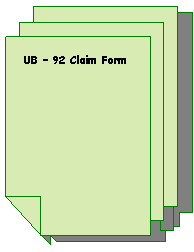
NYS Medicaid WILL implement the new UB-04 paper claim form during the second quarter of 2007. NYS Medicaid does not provide these forms. Providers who use an electronic method to print these forms should contact their national supplier to obtain UB-04 forms for testing. Below are some of the major changes to the form.
- The days fields utilized by residential providers will be removed and that information will be reported with associated value codes and value amounts in Form Locaters 39-41.
- Form Locater 37 which is used today to enter the transaction control number required to replace or void previously paid claims will be moved to Form Locater 64 (Document Control Number).
- Form Locater 51 will no longer be used to report the billing provider's NYS Medicaid Identification Number. Instead, the provider ID will be reported in Form Locater 57, (Other Provider Identification Number).
- Additional Form Locators will be added for the reporting of the National Provider Identification Number (NPI) for the billing provider in Form Locater 56, and the ordering and/or service providers in Form Locaters 78 and/or 79.
- Some Form Locators such as Patient Control Number and Statement Covers Period will be moved to a new position on the UB-04 form.
Providers will be given a transition period where CSC will accept either the UB04 or the UB92.
All Providers
It is anticipated that revised billing guidelines for all the changes noted above will be published on the eMedNY website during the first quarter of 2007.
In addition to the changes to paper claim forms noted above, changes to other paper forms such as:
- enrollment forms,
- maintenance forms, and
- prior approval request forms
will be made in 2007 to accommodate the submission of NPI information.
Questions? Please contact Computer Sciences Corporation at:(800) 343-9000
NYS MEDICAID LABORATORY FEE SCHEDULE
AVAILABLE IN EXCEL FORMAT
Return to Table of Contents

The June 1, 2006 Fee Schedule for Laboratory providers is now available in a downloadable Excel format by accessing the Laboratory Services Provider Manual at
http://www.emedny.org/ProviderManuals/index.html
Other fee for service provider Fee Schedules are scheduled to be available in Excel format in January 2007.
- As the documents are developed for each provider type, providers will see them posted on the provider manual website under the Fee Schedule heading. The Fee Schedules will be an abbreviated file containing the procedure codes, brief descriptions, fees, By Report or Prior Approval requirements, fee changes, and other information as needed. Many providers are able to download such files directly into their billing and accounting systems.
- As the new Fee Schedule sections are posted, a new PDF format Procedure Codes section of the provider manuals will follow. These two new sections combined will eventually replace the current PDF format Procedure Codes & Fee Schedule section. All information currently in the Procedure Codes & Fee Schedule sections will be present in the new Procedure Codes section with the exception of the fees. Fees will only be located in the Fee Schedule. Both Excel (command Edit/Find) and PDF files (Search button) are searchable using keywords.
- The Fee Schedule sections serve as an official notice of Medicaid fees. The Procedure Code sections serve as an official notice of the procedure codes and services that are payable by Medicaid to each provider type, under certain listed limits, rules and criteria. Both the Fee Schedule and Procedure Code sections are effective for dates of service on and after the date published on the documents, until the next revision is released with a new published effective date.
- Check the "What's New" and "Provider Manual" links on http://www.emedny.org/ often to see if your provider type's Fee Schedule and Procedure Code sections are available.
Questions? Please contact the Division of Medical Review and Provider Enrollment at: (518) 474-8161.
The Transportation and Emergency Preparedness Checklist
Return to Table of Contents
The Community Transportation Association of America has developed and released the Transportation and Emergency Preparedness Checklist.
The Checklist is designed as a tool for transportation providers and the facilities and programs they serve to help plan for and use in the event of an emergency to ensure proper transportation of the transportation dependent population.
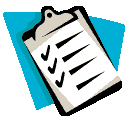
In times of distress, transportation could become a life or death matter to the transportation dependent population, which includes:
- the elderly,
- those living in group situations,
- persons with disabilities and
- those without access to transportation.
Remember, an emergency can happen any time any where! Are you prepared?
For more information, please go to:
http://www.ctaa.org/ntrc/coordination/Emergency_Checklist.pdf
Source: http://www.ctaa.org/
ADDRESS CORRECTION
Return to Table of Contents

In the November 2006 Medicaid Update, an article entitled:
Timely Submission of Claims to Medicaid
included the address for submission of paper claims to Computer Sciences Corporation.
The address incorrectly listed the city as Albany.
The correct address (city of Rensselaer) for submission of paper claims is:
Computer Sciences Corporation
PO Box 4601
Rensselaer, New York 12144-4601
Revised Definition of Ambulance
Advanced Life Support
Return to Table of Contents
Until now, Advanced Life Support (ALS) under Medicaid guidelines has been defined as follows:
ALS services are those ambulance services in which the treatment provided is invasive to the patient inclusive and above the level of care provided by a New York State Certified Emergency Medical Technician (EMT). Such treatment includes:
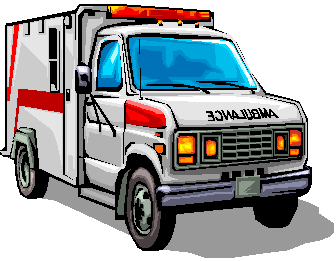
- The initiation of intravenous (IV) fluids.
- Cardiac monitoring (EKG).
- Intubation/insertion of an airway tube.
- Manual defibrillation and/or electric pacing of the patient's heart.
- Administration of drugs which includes oral and all other medications that are stored on the ALS ambulance.
There are situations where an ALS staffed ambulance will be called upon to transport a patient in situations in which certain treatments (such as intravenous fluids or intubation) have already been established. The potential need for an intervention during one of these treatments justifies the inclusion of monitoring these treatments as an ALS level of service, even if the treatments are not actually initiated/delivered by ambulance staff.
To account for the above consideration and to provide a more comprehensive definition, ALS services is being revised to include:
- Advanced pre-hospital patient assessment and appropriate transport destination determination.
- The initiation and monitoring of IV fluids.
- Cardiac monitoring (ECG).
- Intubation/insertion of an airway tube, manual ventilations or the monitoring of an electronic ventilation device.
- Manual defibrillation and/or electric pacing of the patient's heart.
- Administration or monitoring of medications given by mouth, injection or IV drip as prescribed by protocol and/or a physician's order.
- Communication with a physician and the transmittal of patient data such as the ECG.
This new definition is effective November 1, 2006.
Questions? Please contact the Bureau of Program Guidance. Provider Resource Unit at (518) 474-9219.
January 2007
Annual Ambulette Survey
Information Required From Ambulette Providers
Return to Table of Contents
Providers of Ambulette services are reminded that during January of each year they are required to submit vehicle information in accordance with Title 18 NYCRR 502.6(b):
Each provider of ambulette services must, during the month of January of each year, disclose to the Office of the Medicaid Inspector General (OMIG), in writing, the information concerning those vehicles currently owned or leased by the provider. The information to be disclosed must include at a minimum the name and address of the provider, each vehicle's license number and Department of Transportation identification number and a statement regarding whether the vehicle is owned or leased. A provider of ambulette services which fails to disclose this information will have its participation in the medical assistance program terminated.
The forms identifying the information to be disclosed and the return address will be included in the January 2007 Medicaid Update.
A response must be received by February 15, 2007.
Providers that fail to disclose this information will be subject to termination from the medical assistance program.
It is recommended that these forms be submitted via certified mail, return receipt and a copy of both your submission and the proof of mailing be kept for your files. Proof of mailing must be provided by the provider in the event of non-receipt by the Office of the Medicaid Inspector General.
Fraud impacts all taxpayers.
Return to Table of Contents
Do you suspect that a recipient or a provider has engaged in fraudulent activities?
Please call:
1-877-87FRAUD
Your call will remain confidential.
SEMINAR SCHEDULE AND REGISTRATION REMINDER
Return to Table of Contents
- Do you have billing questions?
- Are you new to Medicaid billing?
- Would you like to learn more about ePACES?
If you answered YES to any of these questions, please consider registering for a Medicaid seminar. Computer Sciences Corporation (CSC) offers a variety of seminars to providers and their billing staff. Many of the seminars planned for the upcoming months offer detailed information and instruction about Medicaid's web-based billing and transaction program - ePACES. ePACES seminars are designed for specific provider types.

ePACES,
the electronic Provider Assisted Claim Entry System!
ePACES allows enrolled providers to submit the following type of transactions:
- Claims
- Eligibility Verifications
- Utilization Threshold Service Authorizations
- Claim Status Requests
- Prior Approval Requests
Professional providers such as physicians, nurse practitioners and private duty nurses can even submit claims in "REAL-TIME" via ePACES. Real-time means that the claim is processed within seconds and professional providers can get the status of a real-time claim, including the associated paid amount, without waiting for the remittance advice to be delivered.
Seminar locations and dates are available at the eMedNY website. Seminar registration is fast and easy and is FREE to enrolled Medicaid providers.
Go to www.emedny.org and select "Training" to find and register for the eMedny Training Seminar appropriate for your provider category and location. Review the seminar descriptions carefully to identify the seminar appropriate to meet your training needs. Registration confirmation will be sent instantly to your email address.
If you are unable to access the internet to register, you may also request seminar schedule and registration information by contacting CSC's Fax on Demand at (800) 370-5809 -- request document number 1003 for a list of seminars and registration information to be faxed to you. Please contact the eMedNY Call Center at (800) 343-9000 if you have questions about registration.
CSC Regional Representatives look forward to meeting with you at upcoming seminars!
The Medicaid Program encourages practitioners to copy and distribute the following information to their patients and to share it with their colleagues.
Beware of Carbon Monoxide!
Return to Table of Contents
Carbon monoxide (CO) is a potentially deadly gas. It is colorless, odorless, tasteless and non-irritating generally produced as a by-product from the incomplete burning of carbon-containing fuels such as wood, oil, natural gas, kerosene, coal and gasoline.
What are the sources of carbon monoxide?
Potential sources for CO in the home include:

- leaking or clogged chimney pipe or flue,
- cracked heat exchanger, gas or wood burning fireplace,
- corroded or disconnected water heater vent pipe,
- unvented clothes dryer,
- improperly installed kitchen range or cooktop vent, and
- portable space heaters.
Another potential source of carbon monoxide gas is a blocked exhaust pipe in a running car or truck. A car's exhaust pipe may be buried in ice or snow by a very heavy snowfall or by a passing snowplow.
Always check your vehicle's exhaust pipe to be sure it is not blocked.
Symptoms of Carbon Monoxide Poisoning
Initial symptoms of CO poisoning can be mistaken for flu symptoms. Depending on how long and to how much CO you have been exposed, you can experience any of the following symptoms:
- headaches,
- dizziness,
- weakness,
- nausea,
- loss of muscle control,
- shortness of breath,
- chest tightness,
- visual changes,
- sleepiness,
- fluttering of the heart,
- redness of the skin, and
- confusion and mild behavioral effects
such as slowed reaction time and altered driving skills.
CO poisoning should be suspected if more than one member of the family is sick and if they feel better after being away from home for a period of time.
At high levels, or continued exposure, CO can displace enough oxygen to cause suffocation, resulting in loss of consciousness, brain damage or death.
What Should I Do If I Suspect Carbon Monoxide Poisoning?
You should immediately leave your home and contact the fire department and the Gas Company or heating contractor.
Remember that you cannot smell CO and, as symptoms of CO poisoning increase, you may become confused and less capable of making decisions that could save your life.
Source: http://www.nyhealth.gov/nysdoh/indoor/co.htm.
Mandatory Lead Testing for Children
Return to Table of Contents

The national goal to eliminate childhood lead poisoning by 2010 is a priority for the New York State Department of Health (NYSDOH).
Lead has long been recognized as the leading preventable environment health hazard for young children. Despite significant reductions in the incidence of childhood lead poisoning, thousands of children are identified with elevated blood levels each year in New York State.1
In nearly all cases, children are exposed to lead by ingesting lead paint chips or by ingesting dust contaminated by deteriorating lead paint.
Less commonly, listed below are secondary sources that may contain lead and can be significant contributory sources:
- water contaminated by its flow through lead pipes or brass fixtures;
- soil contaminated by lead dust;
- certain consumer products;
- certain ethnic spices;
- foods; and
- cosmetics.
People in certain occupations who may come in contact with lead on the job and bring it home on their skin and clothes are:
- painters;
- plumbers;
- mechanics; or
- construction workers.
Hobbies that use lead, such as making pottery or stained glass, refinishing furniture, making lead figurines, using indoor firing ranges or loading homemade ammunitions can also be a source of exposure for young children.
Federal Medicaid standards and New York State law require that all children be screened with a blood test at one and two years of age. The federal Medicaid rules require that children between three and six years of age be tested if they have not previously been tested.
In addition to universal blood lead testing of all one and two year old children, primary health care providers should assess each child, who is at least six months of age but under six years of age, for high dose lead exposure using a risk assessment tool based on currently accepted public health guidelines. Each child found to be at risk for high dose lead exposure should be screened or referred for blood lead screening.
For questions about lead exposure or lead testing, please contact your local health department or the NYS Department of Health Childhood Lead Poisoning Prevention Program at (518) 473-4602.
1 Surveillance for Elevated Blood Levels Among Children --- United States, 1997 - 2001, MMWR, September 12, 2003 / 52(SS10); 1-21.

PROVIDER SERVICES
Return to Table of Contents
Missing Issues?
The Medicaid Update, now indexed by subject area, can be accessed online at the New York State Department of Health website:
http://www.nyhealth.gov/medicaid/program/update/main.htm
Hard copies can be obtained upon request by emailing: MedicaidUpdate@health.state.ny.us
Do You Suspect Fraud?
If you suspect that a recipient or a provider has engaged in fraudulent activities, please call the fraud hotline at: 1-877-87FRAUD. Your call will remain confidential.
As a Pharmacist, Where Can I Access the List of Medicaid Reimbursable Drugs?
The list of Medicaid reimbursable drugs is available at: http://www.eMedNY.org/info/formfile.html
Questions About an Article?
For your convenience each article contains a contact number for further information, questions or comments.
Do You Want Information On Patient Educational Tools and Medicaid's Disease Management Initiatives?
Contact Department staff at (518) 474-9219.
Questions About HIPAA?
Please contact CSC Provider Services at (800) 343-9000.
Patient Eligibility
Call the Touchtone Telephone Verification System (800) 997-1111, (800) 225-3040 or (800) 343-9000.
Address Change?
Questions should be directed to CSC at (800) 343-900, option 5.
Fee-for-service Provider Enrollment
A change of address form is available at:
http://www.emedny.org/info/ProviderEnrollment/Provider%20Maintenance%20Forms/6101-Address%20Change%20Form.pdf.
Rate-based/Institutional Provider Enrollment
A change of address form is available at:
http://www.emedny.org/info/ProviderEnrollment/Provider%20Maintenance%20Forms/6106-Rate%20Based%20Change%20of%20Address%20Form.pdf
Billing Question? Call Computer Sciences Corporation:
Provider Services (800) 343-9000.
Comments and Suggestions Regarding This Publication?
Please contact the editor, Timothy Perry-Coon at MedicaidUpdate@health.state.ny.us or via telephone at (518) 474-9219 with your concerns.
The Medicaid Update: Your Window Into The Medicaid Program
The State Department of Health welcomes your comments or suggestions regarding the Medicaid Update.
Please send suggestions to the editor, Timothy Perry-Coon:
NYS Department of Health
Office of Medicaid Management
Bureau of Program Guidance
99 Washington Ave., Suite 720
Albany, NY 12210
(e-mail MedicaidUpdate@health.state.ny.us)
The Medicaid Update, along with past issues of the Medicaid Update, can be accessed online at the New York State Department of Health web site:http://www.health_care/medicaid/program/update/main.htm